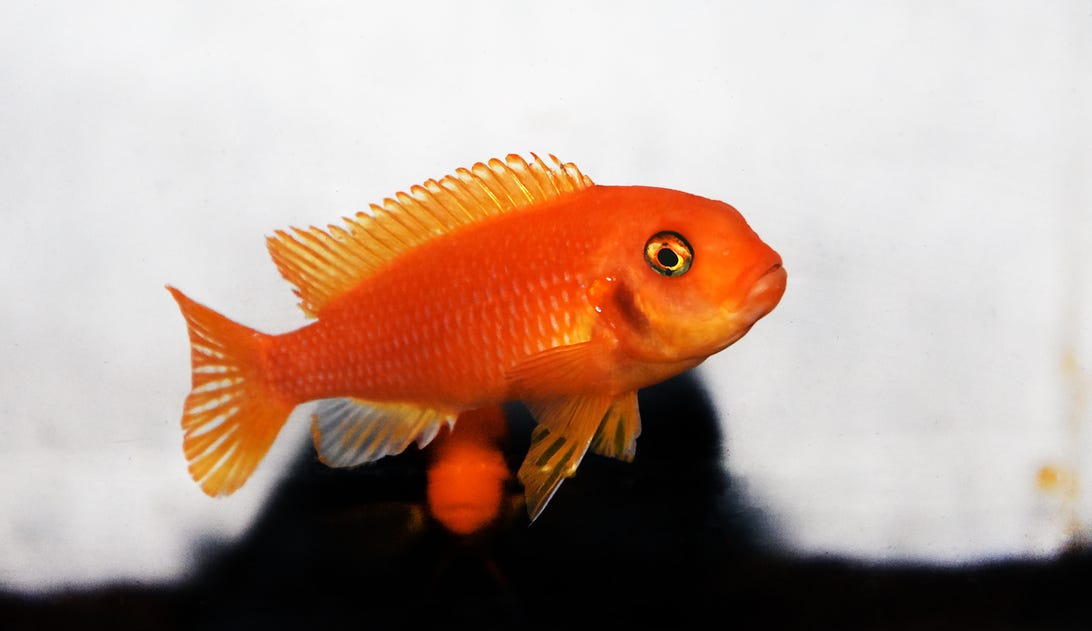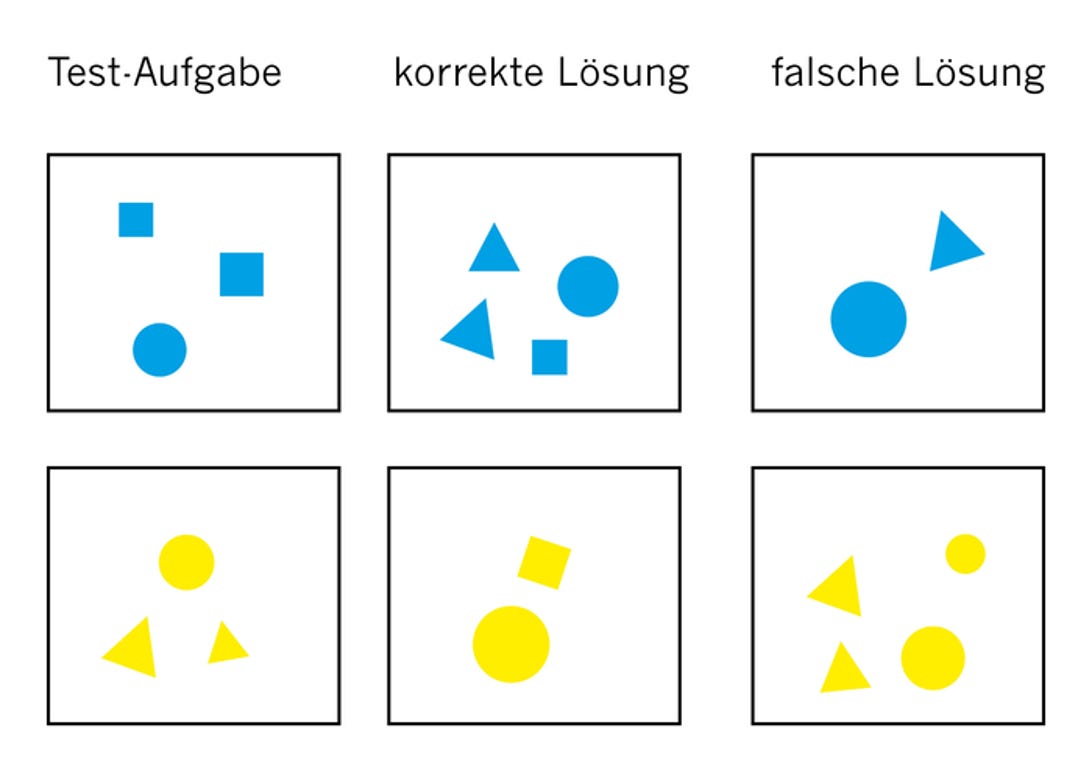

The researchers tested a type of cichlid called Pseudotropheus zebra, of which this is a brilliant red version.
vojce/Getty ImagesIn kindergarten, I bet your teacher used some combination of blocks, M&M's and maybe blueberry-scented stickers to drill the importance of arithmetic into your nascent brain. The goal was to pave a future in which you could add, subtract and multiply at will -- ready for an adulthood filled with Excel spreadsheets and taxes, of course.
Well, scientists just put a few underwater creatures -- cichlids and stingrays -- through a very similar experience, and to their surprise, the fish passed with flying colors.
In a paper published Thursday in the journal Scientific Reports, the research team says these animals exhibited the ability to learn basic math, and even use this knowledge to solve little logic puzzles they were given.
"We trained the animals to perform simple additions and subtractions," said Vera Schluessel, of the Institute of Zoology at the University of Bonn and lead author of the study. "In doing so, they had to increase or decrease an initial value by one."
What could stingrays and cichlids possibly need to do with these numerical skills? On the one hand, the team's bony cichlid subjects are vibrant aquarium favorites, mostly worried about their seaborne nests to the point where they can get a little aggressive and territorial. On the other, cartilaginous stingrays calmly rest on the ocean floor, living a rather solitary lifestyle and threatening prey from afar.
Though the researchers aren't quite sure of the answer to this, they emphasize that these findings nonetheless add to a compounding pool of evidence that fish are much smarter than we think, and deserve much more respect than we offer.
A very fishy arithmetic puzzle
Here's what the team's clever fish went through in their under-the-sea elementary math class. Step one was training.
The scientists first put each animal in a tank and gave them an image with between one and five squares, circles and triangles. Though these shapes were different sizes and sometimes mixed up, they were all always either blue or yellow. Blue meant "add one." Yellow meant "subtract one."
"The animals had to recognize the number of objects depicted and at the same time infer the calculation rule from their color," Schluessel said. In other words, three blue squares translated to "3+1."

This is what the research team's images looked like.
Esther SchmidtThen, once each animal memorized their image, they were given two new images. Image one would have one fewer shape and two would have one more shape. Depending on the color and quantity of shapes of the subject's initial image, the animal had to swim over to the corresponding second image.
Here's an example.
Let's say a stingray was first shown four yellow shapes. That is equivalent to asking them, what's 4-1? When this stingray gets the two new images, it should swim to the one that has three shapes. When you really think about it, this isn't a super simple task. "They had to keep both in working memory when the original picture was exchanged for the two result pictures. And they had to decide on the correct result afterwards," Schlussel said. "Overall, it's a feat that requires complex thinking skills."
Every time the animal subjects got the answer correct, they were given a little treat. Over time, the study says, six cichlids and four stingrays came out at the top of their class. They learned the rules -- and quite well, though subtraction was a little harder for both species. But that's understandable, I'm sure most humans would feel the same.
Test time
After the training period was over, it was time for a test.
The researchers wanted to make sure these animals weren't just getting trained to receive a yummy reward with certain images, but rather truly internalized how to add and subtract. "We deliberately omitted some calculations during training," Schluessel explained. "Namely, 3+1 and 3-1. After the learning phase, the animals got to see these two tasks for the first time. But even in those tests, they significantly often chose the correct answer."
And later on, after overcomplicating the tests even more by offering a second image where two shapes were added instead of just one, for instance, the researchers found the animals still choosing the right answer -- for the most part, that is.
Though the team's new study results aren't incredibly shocking, as fish have already been shown to distinguish between numerical values in the past, the researchers still found it surprising that these animals could employ complicated strategies like arithmetic to manipulate quantities in their minds.
That's because they don't have a cerebral cortex, or the part of the brain built for the job of completing complex cognitive tasks, like we and other vertebrates do. Thus, it's pretty incredible that the two studied species exhibit a similar thought process to us without the tool. And interestingly, the team's procedure was based on a mechanism previously used on honeybees, which ultimately found the buzzers also successfully calculating quantities despite a lack of cerebral cortex.
"Given that honeybees and humans are separated by over 400 million years of evolution," the authors of the bee study write in their 2019 paper published in Science Advances, "our findings suggest that advanced numerical cognition may be more accessible to nonhuman animals than previously suspected."
If anything, this is all just more confirmation that animals don't need to be like humans in the slightest for us to consider them intelligent and worthy of humane treatment.









 Add Category
Add Category